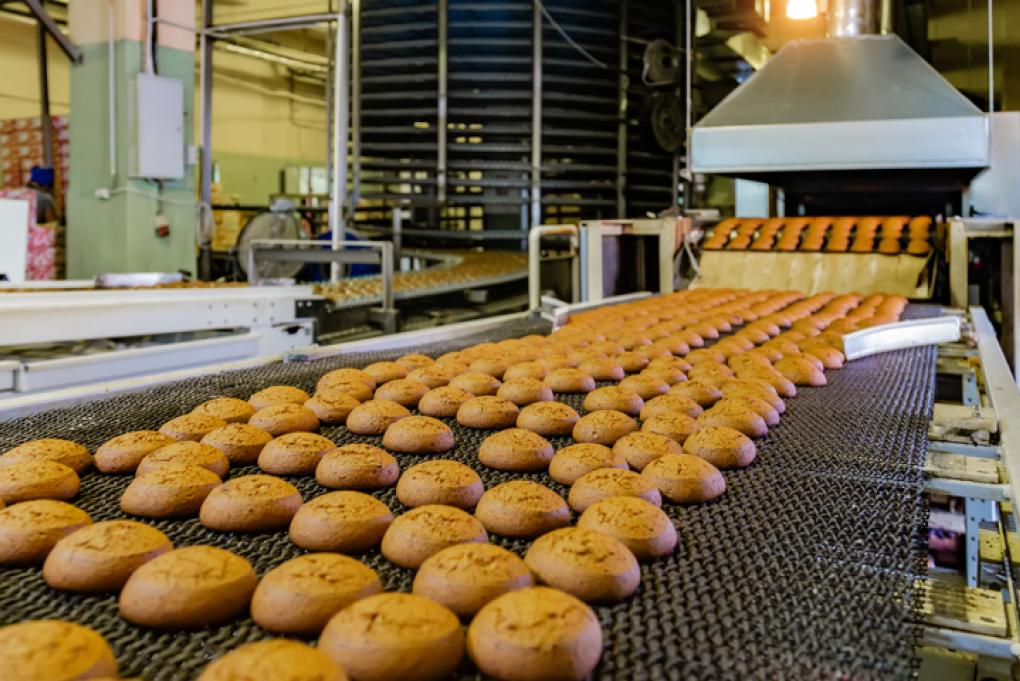
The war in Ukraine is affecting trends in the agrifood sector
Rising production costs as a result of the war in Ukraine are affecting all the links in the food chain: production, processing, distribution and transport, although the primary sector has been particularly hard hit, also adversely affected by unfavourable weather conditions in the form of drought. Rising costs are being passed on to the food prices paid by end consumers, pushing up spending on food, particularly among lower-income households. The most positive note comes from the external sector: agrifood exports have continued to grow strongly in 2022 and competitiveness indicators do not seem to have worsened in spite of the price hikes.
The primary sector is suffering from an unfavourable environment for agriculture
The first half of 2022 produced poor figures for Spain’s primary sector: gross value added (GVA) fell sharply (–2.6% year-on-year in real terms) due to adverse weather conditions (drought) and the sharp rise in production costs (energy, fertilisers and animal feed). This performance contrasts with that of the Spanish economy as a whole, which saw very strong growth during the first half of the year (6.3% year-on-year), thanks to the boost from private consumption and international tourism, both helped by the end of restrictions associated with the pandemic. As a result, the primary sector has lost share in the economy, falling from 2.8% of total GVA in 2021 to 2.1% in Q2 2022.
The primary sector has lost share in the economy, falling from 2.8% of total GVA in 2021 to 2.1% in Q2 2022
In fact, a lack of rain has led to prolonged drought in much of Spain: water reserves were at 39% of their capacity at the beginning of August (the lowest since 1995) while surface soil moisture levels were also low in most of the country.1 These conditions have reduced crop yields, such as cereals whose volume fell by 5.8% in the 2021-2022 season, representing 4.1 tonnes per hectare on average compared with 4.3 tonnes per hectare the previous season, according to estimates by Spain’s Ministry of Agriculture, Fisheries and Food.2
- 1Although the prolonged drought improved significantly in March following heavy rains, May and June were again very dry. See the «Boletín mensual de estadística» from Spain’s Ministry of Agriculture, Fisheries and Food (July 2022).
- 2«Evolución de los balances de cereales en España, Campañas 2020/2021 y 2021/2022», Ministry of Agriculture, Fisheries and Food (July 2022).
The outlook for the agrifood sector remains highly dependent on developments in the war in Ukraine and the energy crisis
In addition, the war in Ukraine has pushed up input prices for the primary sector, a trend that had already started in 2021 but has intensified since the outbreak of the conflict. Specifically, primary sector production costs soared by 33% year-on-year in the first four months of the year, having already risen by 13% in 2021. Apart from the sharp rise in energy costs (88% year-on-year between January and April 2022), there has also been a significant increase in the price of fertilisers (94%), an input of which Spain is a net importer. However, the component contributing the most to the primary sector’s rising costs (see the table below) is feed, due to its large share in the overall cost structure, namely 53.8% of the total in 2021. Spain also imports approximately half the cereal destined for animal feed, a percentage that rises to 82% in the case of corn (which comes mainly from Ukraine),3 so Spanish farming is suffering from the fluctuations in cereal prices on international markets, an aspect we analyse in more detail in the next article of this Report.
Nevertheless, it is important to note that the prices of the main agricultural commodities quoted on international markets have fallen recently from the record highs seen in the first few weeks of the war, with futures markets pointing to a somewhat more stable trend at levels similar to those prior to the outbreak of the war. We can therefore be cautiously optimistic about the outlook for the trend in costs borne by the sector.
- 339% of Spain’s corn imports came from Ukraine in 2020.

The government has approved various support measures to help the sector cope with rising production costs. In March, the first action plan to deal with the situation resulting from the war in Ukraine included 430 million euros for the sector, while a further 72 million euros were included in June’s decree extending these action plans.4 The sector is also starting to benefit from projects financed by the NGEU funds (e.g. the second tranche of disbursements to modernise irrigation has been launched). Moreover, the Strategic Project for Recovery and Economic Transformation (PERTE in Spanish) for the agrifood sector is now being implemented, with a budget that has been increased to 1.8 billion euros. This focuses on three priority areas: transforming the industrial value chain, digitalising the sector and boosting scientific research.
- 4Measures have also been approved to tackle the drought, amounting to around 450 million euros. See the Spanish government’s press release «Rendición de cuentas en el primer semestre del año».
Production in the agrifood industry is resilient
The food industry saw an upward trend in the first part of 2022, with industrial production growing by 3.4% (cumulative year-on-year change between January and June, in real terms) and turnover by 17.7% (nominal value). Beverage production recovered rapidly in 2021, thanks to the post-pandemic reopening of the hospitality channel (hotels, restaurants and cafeterias), a positive trend that has continued in 2022. The rise in producer prices is also less severe for beverage production than for the food industry. Specifically, the producer price index for beverage production increased by 3.8% year-on-year in the cumulative period between January and June 2022, compared with a rise of 14.3% in the food industry and a significant increase of 21.1% for manufacturing as a whole. Particularly relevant in the food industry were the higher producer prices for milled products (32.0%), animal feed (28.8%) and oils and fats (27.6%), these being more directly affected by the global rise in the price of cereals and vegetable oils.
The agrifood industry has recovered from the impact of the pandemic and its trend is positive, for the moment
Agrifood industry: production and prices on the rise
Employment reflects the dynamics of activity in each sector: more favourable in the food industry and less so in the primary sector
The agrifood industry’s labour market saw a favourable trend thanks to the good performance by the food and beverage production branches: the number of workers registered with Social Security rose to 462,000 in July, around 15,000 more than a year ago. In contrast, registered workers in the primary sector fell by 3.4% year-on-year in July 2022 with 37,000 fewer than a year ago, in keeping with the greater difficulties faced by the sector. One very positive aspect is the reduction in the temporary employment rate: in Q2 2022, 45.3% of agricultural employees were on a temporary contract, 8.3 pp less than a year earlier, as a result of the labour reform that came into force in March. However, it is still too early to make a complete assessment of the reform’s impact on a sector that is so seasonal in nature.
Spending on food is rising due to higher prices
Rising costs in all links of the food chain, including transport and distribution, have been passed on to the food prices paid by the end consumer. In July, the CPI for food rose by 12.4% year-on-year (11.9% for processed food and 13.4% for unprocessed food), contributing 3.3 pp to general inflation (10.8% in July). Nevertheless, it is important to remember that the shock causing this rise is external, exogenous and shared by the countries around us. It is also occurring in the euro area as a whole (+9.8% year-on-year in July) and to a greater or lesser extent in the different countries (+11.5% in Germany, +12.2% in Portugal, +8.6% in Italy and +6.0% in France). The outlook is for food inflation to remain high for a few more months, given the time lag with which price shocks are usually passed down the food chain. However, in the absence of further shocks, inflationary pressures are expected to ease thanks to the recent containment of agricultural commodity prices on international markets and transport costs (linked to oil prices). The next article in this Sector Report discusses this issue in more detail.
Rising food prices are affecting the amount of food consumed by households. According to the retail sales index produced by Spain’s Statistics Institute, food sales grew by 6.2% year-on-year in the first half of 2022 at current prices (i.e. nominal expenditure on food has increased) but fell by 1.4% at constant prices (i.e. the quantity consumed has altered). The indicator of CaixaBank Research’s Consumption Monitor, based on card payments in supermarkets and food establishments (nominal expenditure), shows that between the end of February and the beginning of March there was an increase in stockpiling purchases due to fears of possible shortages. Since then, and up to July, food expenditure would have grown by 11.6% year-on-year on average compared to an increase of 4.6% year-on-year in January and February, before the outbreak of the war.
Spending via Spanish cards in supermarkets and large food stores has increased after the outbreak of the war in Ukraine
CaixaBank’s internal data enable us to analyse the trend in food expenditure according to household income level. The following chart shows that low-income households have increased their spending on food the most in the past few months, a result that could be explained by the fact that, in the foods that make up the typical shopping basket for low-income households, a larger proportion have undergone more significant price increases.
Actually, one would expect that food consumption both inside and outside the home would readjust and that retail purchases would increase to offset lower expenditure on hospitality. For the time being, however, and in general terms, spending on hospitality continues to perform very well in nominal terms (+59% in July compared with the same month in 2019)5 thanks to the excellent tourist season, although these figures could moderate over the coming months.
- 5These figures, in nominal terms, are affected by card payments replacing cash payments.
Spanish agrifood exports continue to grow, supported by the sector’s high competitiveness
So far this year, Spanish agrifood exports have continued to perform excellently, posting growth of 14.1% year-on-year in the cumulative period from January to June 2022, totalling 61,223 million euros (cumulative over 12 months). For their part, agrifood imports accelerated their rate of growth (30.2% year-on-year between January and June), bringing the external surplus of agrifood goods to 1.2% of GDP (compared with 1.5% in 2021).
Exports of all product groups increased in the first half of 2022 in nominal terms, although meat exports barely grew (0.1% year-on-year) due to a significant decline in pork exports to China.6 More positively, exports of fats and oils (olive oil, sunflower oil), vegetables (peppers, aubergines, tomatoes, cucumbers, etc.), molluscs and fresh fish, food preparations, juices and beef have all increased. Part of this good performance can be put down to the rise in export prices since, in terms of volume, exports of some product groups actually declined in the first half of the year (fruit, meat, pulses and vegetables, beverages, dairy products, etc.). See the last column of the table below.
- 6Spanish pork exports to China increased sevenfold between May 2019 and May 2021, following the extraordinary growth in Chinese demand when its domestic production was severely hindered by African swine fever. However, in the last year up to June 2022, pork exports to China fell by 70%, although a large part of these exports have since been redirected to other markets.
Notable increase in exports of fats and oils, pulses and vegetables, molluscs and fresh fish, food preparations, juices and beef

Thanks to the sector’s high competitiveness, Spain occupies an outstanding position in the world ranking of agrifood exporters (seventh in the world, fourth in the EU)
One current concern is the impact the sector’s rising costs may have on its competitiveness. One way of analysing the competitiveness-price relationship is through the unit labour cost (ULC), defined as the ratio between labour cost per worker and productivity per employee. The trend in this variable makes it possible to estimate any gains or losses in competitiveness; an increase in ULC implies a loss of competitiveness as the labour cost to obtain one unit of product has increased.
The chart below shows that the primary sector’s ULC declined sharply in 2020, especially at the beginning of the pandemic (therefore gaining in competitiveness). However, since Q1 2021 the ULC has been rising and is now at a level very similar to before the pandemic, indicating that the sector’s competitiveness remained the same over the period as a whole. Moreover, the performance of the primary sector is more favourable than that of the economy as a whole, which would have increased the ULC by 4.8% between Q4 2019 and Q2 2022. Exports will also be boosted by the euro’s depreciation of around 3% between January and July 2022 against a basket of developed countries’ currencies, and of more than 10% against the US dollar.





